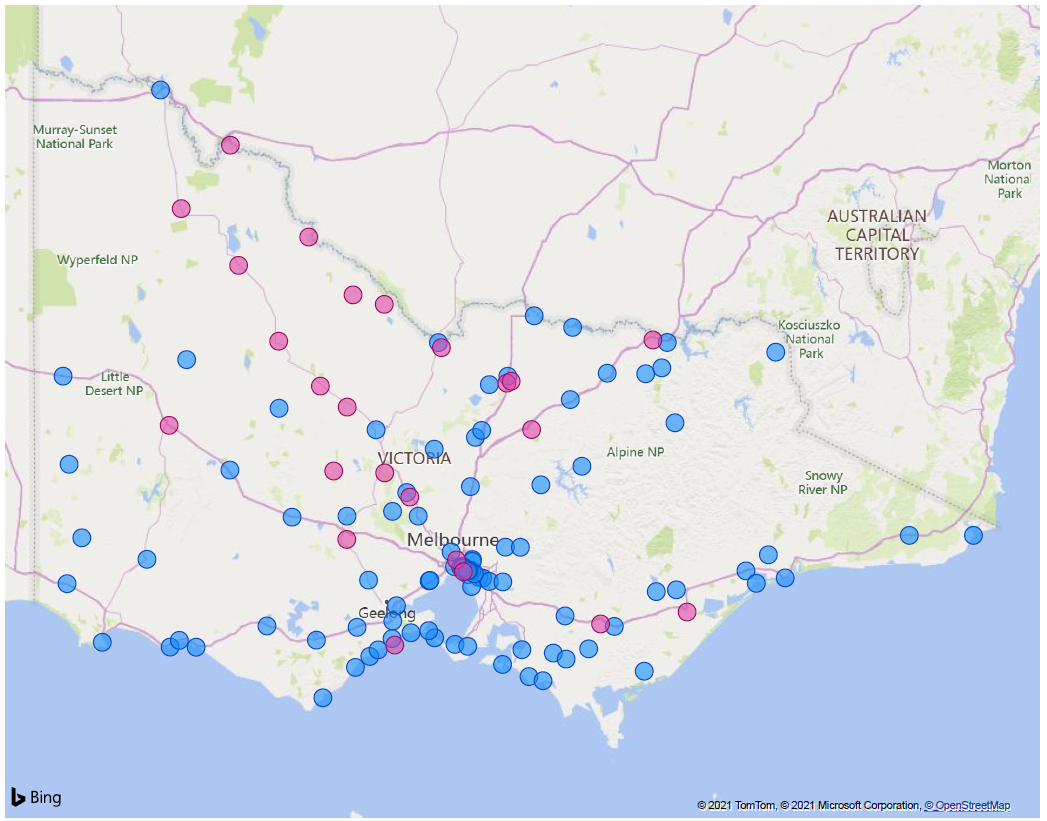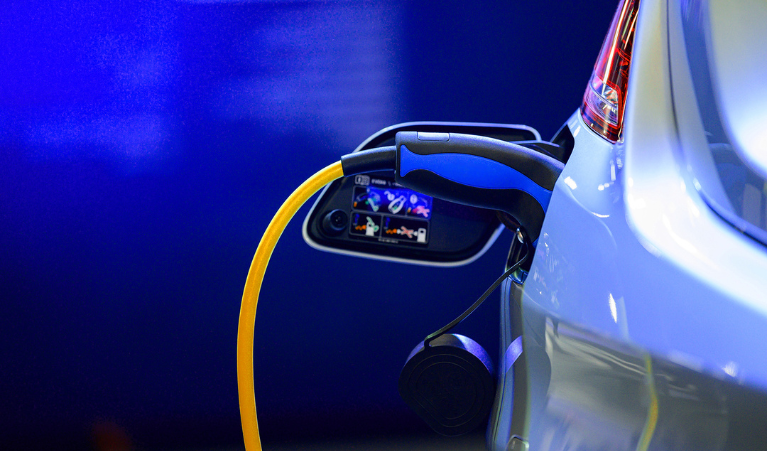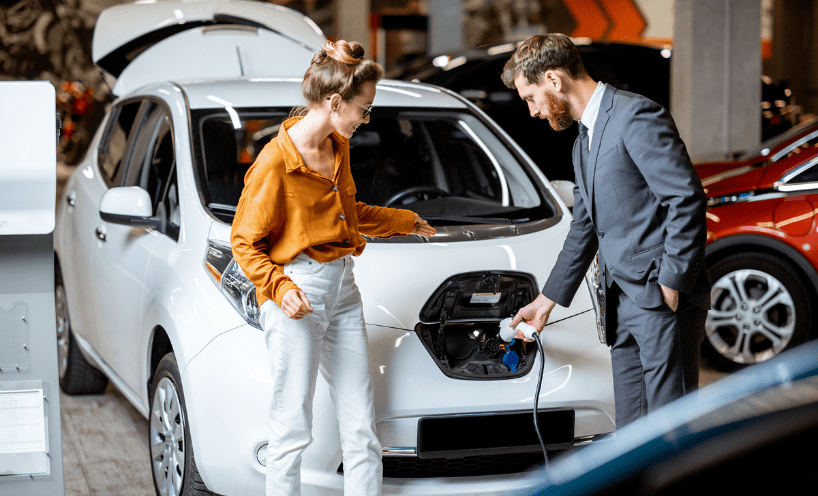By 2030, we’re aiming for half of all light vehicle sales in Victoria to be zero emissions vehicles. Our roadmap outlines how we plan to achieve this goal.
First, learn your vehicle acronyms:
- (ZEVs) zero emissions vehicles. They include battery electric vehicles (BEVs – commonly known as EVs) and hydrogen fuel cell electric vehicles (FCEVs).
- (PHEVs) plug-in hybrid vehicles. Like BEVs, they have an electric motor powered by a battery. But they also have a ‘range-extending’ petrol-based internal combustion engine.
- (ICEVs) internal combustion engine vehicles.
Range
Many EV models currently available in Australia can travel between 350 and 600 kilometres (in optimum conditions) on a single charge. With Victorians travelling an average of just 38 kilometres a day, that’s more than enough to get you where you need to go through the week.
A further roll-out of EV charging infrastructure will add to the network already on our highways, in regional towns and at our favourite tourist spots.
You can already drive from Adelaide to Melbourne and on to Sydney with easy access to ultra-rapid charging stations (found via an app on your smartphone, such as PlugShare). So, you don’t have to worry about running out of charge.
Electric vehicle charger locations

Charging time
We are building a network of public fast-chargers. These will add to the series of ultra-rapid chargers already found across Victoria, so you can always top up on charge when you need it.
Some of the fastest chargers can provide 400 km range in 15 minutes. The average charging time for an EV at home is 6 to 8 hours. This means you can easily charge your car at home overnight – just like your smart phone.
The benefits are even greater if you’ve got solar panels on the roof – you can charge your car with cheap, renewable energy. With some of the most popular models of ZEVs, a full charge will give you 450km of range. For most people, that can last up to 10 days.
Affordability
The number of ZEV passenger models available for purchase in Australia has increased greatly in recent years. With the estimated yearly savings of $1,600 for fuel, maintenance, and registration. It means you can expect to save over $7,000 in the first 5 years of owning your new car.
Environmental benefits
As the name indicates, ZEVs have zero exhaust emissions, making them better for the environment and our health than fossil-fuelled ICEVs. Research shows that even if a ZEV is charged by our grid electricity (including coal-fired sources), it will still improve overall net emissions. This is due to their energy efficiency and ability to recharge when braking.
The cleanest and cheapest way to charge your ZEV is by using a renewable energy source, such as solar. By taking advantage of the Solar Homes Program, you have the potential to drive completely carbon neutral, charging your car from the clean power you generate throughout the day.
ZEVs are also more carbon-efficient than ICEVs over their lifecycle (even when powered by fossil fuels). This includes raw material extraction, manufacturing, fuel cycle and end-of-life recycling.
Safety
Research shows that driving a vehicle with a battery is just as safe as driving a vehicle that runs on petrol or diesel. As with all vehicles in Australia, new ZEV models are required to undergo rigorous safety testing before they can be made available for purchase. Additionally, electric vehicle charging stations are required to meet strict safety standards.
Hydrogen fuel cell refuelling
Refuelling a FCEV is no more complicated than refuelling an ICEV - you use a bowser pump and nozzle at a hydrogen refuelling station, and it takes about the same time to fill up the tank too.
Grid demands
The early stages of EV transition will allow our electricity system to be upgraded in an orderly manner and will even include the ability for electric vehicles to help with grid stability. For example, the widespread rollout of rooftop solar systems means that during the day, there’s more power than we need in some areas. EVs can help by absorbing some of this excess capacity.
In the future, EVs could also act as another energy source when parked in your garage. For example, current battery sizes can power your home in the evenings for up to 3 days. In a blackout, your ZEV could power your home.
As a mobile source of energy, EVs have other possibilities. These include the potential to power your campsite or worksite and the growing potential for them to put electricity back into the grid. Take a look at this article explaining how EVs can support the grid.
Performance
On top of the environmental and cost benefits of owning a ZEV, you’ll also find that they outperform fossil-fuelled cars in other ways. Unlike ICEVs, EVs deliver great acceleration, making them nimble around town and giving them confidence when merging onto the freeway.
EVs with batteries mounted along the bottom of the vehicle also have a lower centre of gravity, meaning better handling and cornering.
Many EVs are also more spacious than a similarly-sized ICEV due to the placement of the batteries and the electric motor taking up less space than an ICEV drivetrain. This leaves more cabin space for passengers and room for groceries or camping gear.
Charging access for those without off-street parking
As more and more public chargers become available, Victorians without access to off-street parking will have more options for charging their EV.
The Victorian Government is investing $19 million to accelerate the roll-out of EV charging infrastructure across Victoria. Work is also underway to make charging easier in the future through planning and building standards, meaning more charging locations at workplaces and public spaces.
ZEV targets
More and more people are choosing to drive a ZEV. With many countries around the world setting targets to phase out the sale of ICEVs, the pace of the global switch to ZEVs will only accelerate.
The Victorian Government has set a target of 50% of all new light vehicle sales to be ZEVs by 2030. With many countries setting their own targets and more and more people choosing to drive a ZEV, the pace of the global switch to ZEVs will only accelerate.
ZEVs, with their many benefits – environmental, economic and technological – are the future.
Updated




